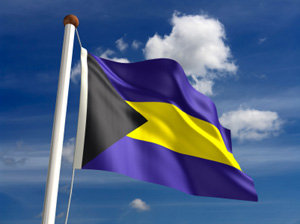
Junkanoo Summer Festival
The Junkanoo summer festival features costumes, music, dance and many historical exhibitions. The memorable events take place across the four big islands – Exuma, Nassau, Grand Bahama, and Abaco. Lots of good weather and exciting activities to enjoy during your stay in the Bahamas.
Historical Junkanoo
 When the loyalists first came to the Caribbean
in the late 18th century, they brought with them many slaves. The Junkanoo summer
festival is said to have started when legendary West African chief John Canoe gave
the slaves a few days off at Christmas and New Years to celebrate. The slaves “rushed
out” into the streets to make music and dance. No one is quite sure where
the name Junkanoo came from, but rumour has it that one of the Africans who led
the original celebration was named Yakonomo or Jankomo. Through the years, the festival
grew from a few days to a couple of weeks during the holidays. Now, it lasts a few
months during the summer. And that is the history of the Junkanoo summer festival.
When the loyalists first came to the Caribbean
in the late 18th century, they brought with them many slaves. The Junkanoo summer
festival is said to have started when legendary West African chief John Canoe gave
the slaves a few days off at Christmas and New Years to celebrate. The slaves “rushed
out” into the streets to make music and dance. No one is quite sure where
the name Junkanoo came from, but rumour has it that one of the Africans who led
the original celebration was named Yakonomo or Jankomo. Through the years, the festival
grew from a few days to a couple of weeks during the holidays. Now, it lasts a few
months during the summer. And that is the history of the Junkanoo summer festival.
Junkanoo Summer Festival Spirit: Costumes, Dance and Music
The Junkanoo Summer parade is actually a competitve event. There are four
or five different groups who are judged based on the best costumes, dance and music.
Each group consists of 500 to 1000 people. These people take their parades seriously!
Through the years, the Junkanoo costumes have evolved from sea sponges, leaves and shredded paper to vibrant and exquisitely detailed attirement. All year, teams create lavish costumes of crepe paper glued to fabric, cardboard or wood, complete with headdress, shoulder piece and skirt. A spectacular mixture of color, ruffles and motion. It is customary for each group to create a costume related to a closely guarded secret theme, which can be almost anything, from past events to present day issues.When the festivities are over, the most elaborate costumes are preserved for posterity in the Junkanoo Museum in downtown Nassau at the Prince George Wharf.
The rhythm of Junkanoo is infectious. Many of the groups involved in the parades spend the year not only making their own costumes but creating instruments as well. The drums are made from oil barrels and covered with either goat or sheep skin. For those of you looking to hear that cowbell, you will not be disappointed! The Junkanoo features the megahorn cowbell with performers managing five to a hand. Conch shells , foghorns, bicycle bells, and more traditional brass instruments are used.
The dance initiated by the ‘rush outs’ was very basic - one step forward and two steps back - whatever moves ya dance! As teams and competitions began to emerge, so did the dance routines, and more complex choreography developed. In the late 80’s, most groups turned to professional dance studios for a more disciplined display. Since the Summer Junkanoo Festival is mainly African-influenced, many dance perfomances are ethnic in nature. A great combination of choreography and Bahamian spirit.
What the Modern Day Offers You
The Junkanoo festival runs from June 9th to July 31st. In recent years,
part of the festivities have been moved from the city to Taino Beach. This beautiful
sandy beach presents a friendly location that provides a kids’ onsite playground
called Junkakids Korner, where children can jump, slide, and run to their heart’s
content in an enclosed area and secure environment. Other events that have a historical
theme, such as rope jumping and box scooter racing, appeal to children of all ages.
Through the summer months, the festival runs seven days a week, with the main event called ‘Junkanoo in the Streets’ held on Thursdays. At various locations throughout the islands, you can purchase tickets for the colorful parades, which run from 2 am till 9 am. You can show up whenever you like, give your ticket to the nice usher, and he will find you a seat in the sports bleachers. The parades are fun and family-friendly; so despite the late hour, bring your kids to see the show – they will love it!.
One of the daytime activities features a tea party, giving you the opportunity to mix with other Junkanoos. A guide will bring you on a nature hike and inform you on the various indigenous plants used for medicine. Horse and carriage rides will take you through Smith Point, where you can visit historical sites.Throughout your journey, taste authentic Bahamian food from the countless vendors, take in the art exhibitions, or you can just relax and listen to poetry in the park. You will not find any shortage of things to do as you enjoy your Junkanoo Summer Festival.
About the Author:
Fred Coolridge is the content manager and author for the website
Great Exuma Island, Bahamas - www.exumabahamas.org.
